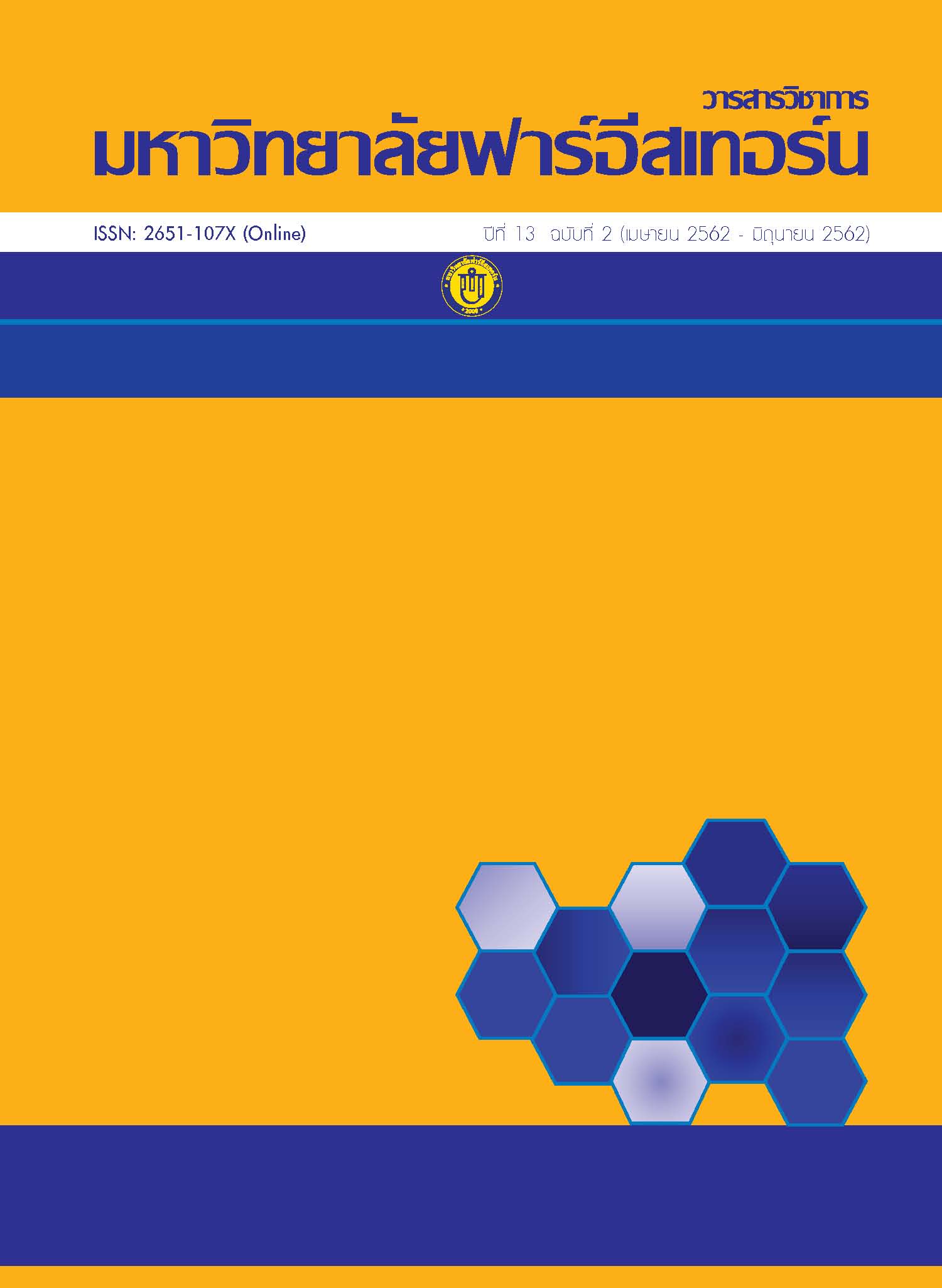The Process for the Creation of Youth Saraphi Historical Research, Saraphi District, Chiang Mai Province
Main Article Content
Abstract
The purpose of this research were to 1) study youth research processes under the Saraphi Historical Research Project 2) study conditions of achievement, problems, obstacles and studying local history. The area and target groups were all 58 participants. The participants consisted of lecturers, administrators, community leaders, directors, teachers and students from Vachiralai School. Participation is completely voluntary by using a purposive sampling. The research instruments were interview form, group discussion topics form by gathering workshop information between Participatory action research and Oral History, in addition to providing youth research project report in 3 teams, a team of 5 people who experts on community mapping and was classified by Saraphi Historical Operational Training, presented in the form of descriptive analysis. The results found that, there are 5 steps in youth research procedures: Step 1: explored and data brainstorming. Step 2: located networks of support for mutual understanding and attitude adjustment. Step 3: complements the process of creating research. Step 4: research activities Step 5: reflecting on learning and evaluation. There are two factors of success, the first one is an understanding of history research and the second one is organizing activities: studying history through a variety of methods. The conception of encouraged local youth to study local history is an empowerment, inspiration, exemplification, promotion and support. However, the problem and obstacle are anxiety in research period.
Article Details
1. Any views and comments in the Journal of Social Innovation and Lifelong Learning are the authors’ views. The editorial staff have not to agree with those views and it is not considered as the editorial’s responsibility.
2. The responsibility of content and draft check of each article belongs to each author. In case, there is any lawsuit about copyright infringement. It is considered as the authors’ sole responsibility.
3. The article copyright belonging to the authors and The Far Eastern University are copyrighted legally. Republication must be received direct permission from the authors and The Far Eastern University in written form.
References
ธวัชชัย หล่อวิจิตร. (2550). การจัดการความรู้: ชุมชนนักปฏิบัติ (Communities of Practice: COP).. กรุงเทพฯ: สถาบันเพิ่มผลผลิตแห่งชาติ.
ประสพสุข ฤทธิเดชและคณะ. (2550). โครงการยุววิจัยประวัติศาสตร์ท้องถิ่นจังหวัดมหาสารคาม. กรุงเทพฯ: สำนักงานกองทุนสนับสนุนการวิจัย.
มานูนณย์ สุตีคา ฐิติมา ญาณะวงษา และนวพร ชลารักษ์. (2559). การศึกษาประวัติศาสตร์ท้องถิ่นโดยการส่วนร่วมของชุมชนตำบลสารภีอำเภอสารภี จังหวัดเชียงใหม่: ต้นยางนาและถนนสายเชียงใหม่-ลำพูน. เชียงใหม่: สำนักงานกองทุนสนับสนุนการวิจัย.
เมธี ใจศรี นิศาชล ทองขาว พะเยาว์ พิกุลสวัสดิ์ พวงผกา หลักเมือง และจันทร์ รัตนจีระวงค์. (2552). โครงการการศึกษาประวัติศาสตร์ท้องถิ่นโดยการมีส่วนร่วมของชุมชนตำบลหางดง อำเภอหางดง จังหวัดเชียงใหม่. กรุงเทพฯ: สำนักงานกองทุนสนับสนุนการวิจัย.
ยงยุทธ ชูแว่น. (2541). ครึ่งศตวรรษแห่งการค้นหาและเส้นทางสู่อนาคตประวัติศาสตร์ท้องถิ่นไทย. กรุงเทพฯ: สำนักงานกองทุนสนับสนุนการวิจัย.
เรณู อรรฐาเมศร์. (2552). ยุววิจัยประวัติศาสตร์ท้องถิ่นภาคเหนือ. กรุงเทพฯ: สำนักงานกองทุนสนับสนุน การวิจัย.
อภิญญา บัวสรวง และ ขวัญจิต ศศิวงศาโรจน์. (2554). โครงการสังเคราะห์ผลงานยุววิจัยประวัติศาสตร์ท้องถิ่นภาคกลาง. กรุงเทพฯ: สำนักงานกองทุนสนับสนุนการวิจัย.
อรรถจักร สัตยานุรักษ์. (2554 ). ยุววิจัยวิจัยประวัติศาสตร์ท้องถิ่นภาคเหนือ. เชียงใหม่ : สำนักงานกองทุนสนับสนุนการวิจัย.

